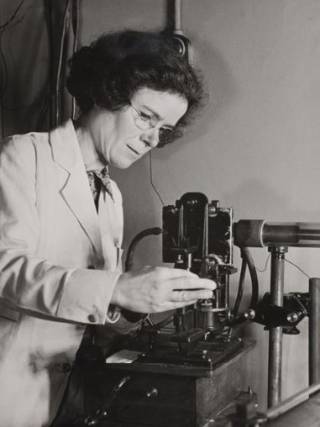Dame Kathleen Lonsdale was one of the first women to become a Fellow of the Royal Society, in 1945.
Who is Kathleen Lonsdale and what is her connection to UCL?
Born in 1903 into a large family in Ireland, Kathleen Lonsdale moved to England with her mother following her parents’ divorce. She had to attend a boys’ school for maths and science lessons as the subjects were not offered at her girls’ school. She won a scholarship to start her degree at Bedford College for Women at the age of 16 and graduated with the highest marks in physics in 10 years. She was then offered a research post at UCL, working with William Henry Bragg and later moved with him to the Royal Institution. She returned to UCL in 1946 as a reader before becoming the first female professor of Chemistry at UCL, founding the crystallography department.
What is inspiring about Kathleen Lonsdale?
Kathleen Lonsdale not only survived but excelled in an age when societal expectations and opportunities for women were limited. She showed tenacity in pursuing her interest in science as a student; continued working on her research at home after the birth of her three children; and became one of the first women fellows of the Royal Society. Her achievements in discovering the structure of benzene and hexachlorobenzene, working on the synthesis of diamonds and pioneering the use of x-rays to study crystals is even more remarkable in that her life was disrupted by two world wars. This undoubtedly contributed to her strong belief in pacifism, which led her to joining the Quakers and serving one month in Holloway Prison for refusal to register for civil defence duties. She even used this experience positively, becoming a prison reform activist.
What is her legacy?
While Kathleen Lonsdale achieved a multitude of awards during her lifetime, including being the only woman at UCL to have a building named in her honour, her most important legacy is to encourage all women to believe in their potential.
 Close
Close


